Deckible
Deckible makes playing with digital cards an engaging experience for card collectors.
Client
My ROLE
Objective
Complete redesign of the Deckible app before product launch.
Timeline
Feb. 2022 – July 2022
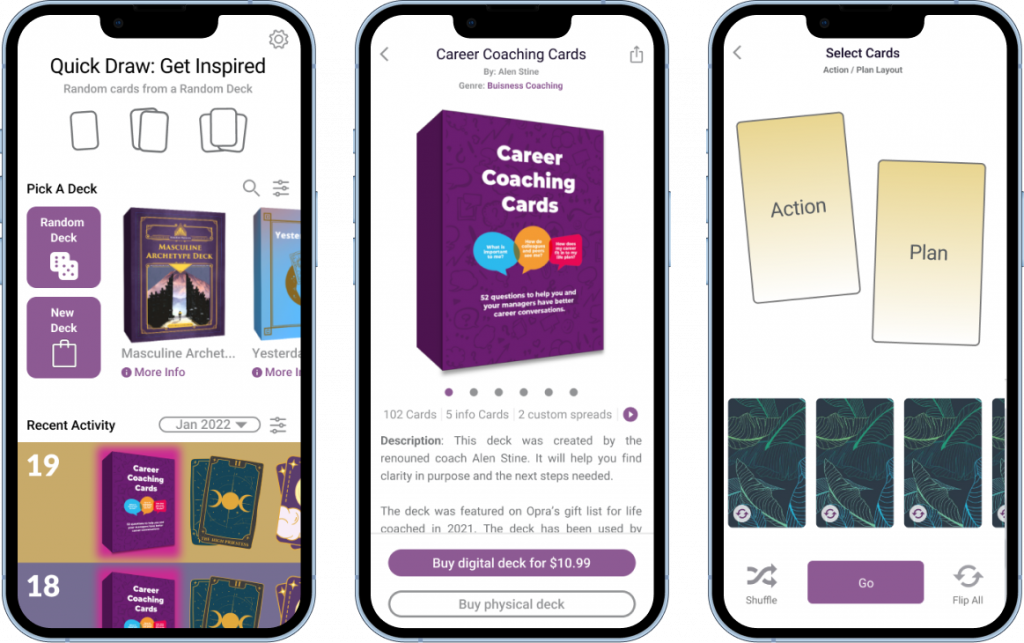
Project Overview
Deckible started with a graphic designer who left before coding started. During development, it became clear that the original design was more about attractive graphics and features than the user experience.
As the sole product designer, I joined the team to rework the design using UX principles.
I collaborated directly with the founder, developer, and deck creators already using the beta. My work touched every phase of the design process and turned an idea into a product. The app redesign addressed underlying flaws in the user experience and has given the Deckible team confidence to launch the app.
My work also made Deckible’s infrastructure scalable to support a larger team of creatives. It allowed the company to grow from 50 deck creators to over 100 in the three months before launching.
Challenge & Goal
Millions of people use decks of cards. Decks are used for social games, business coaching, relationship coaching, meditation, and journal prompts.
People who love cards LOVE CARDS. They are avid collectors.
In 2021 the pandemic saw a massive surge in the market. Independent deck creators produced 380 decks, with over 140,000 backers, and made over five million in sales on Kickstarter alone.
There is a considerable challenge for deck creators to build awareness around their new decks. Even when collectors/users find one they like, they are hesitant to pay for yet another deck. Through user interviews, I discovered that the biggest reason why deck collectors don’t buy more decks is that they don’t have enough room on their bookshelves.
This creates a big opportunity to bring deck creators and users together on a platform that makes using cards quick, easy, and accessible through a digital experience. The Deckible app will free up users’ bookshelves and put their favorite decks in their pockets.
How might Deckible popularize digitized decks, like kindle did for eBooks?
Discovery: Starting with the User
Deckible’s first prototype was frustrating for users because it focused on features instead of the user’s journey. I knew we had to redesign the app and wanted to start by reviewing the core business assumptions to explore what the user really needed.
I wanted to find out…
- Do people want/need digital decks?
- Are there advantages to having a digital deck and a unique experience that can’t be found with a physical deck?
- What features would Deckible need to entice deck creators to join the platform?
- What would make a digital deck feel “real”?
I did open interviews with deck creators and target users to understand users. For the first round, I interviewed four users and three deck creators.
After those interviews, I utilized social media by posting polls and questions in targeted Facebook groups. This was a fast way to get input from a large group of people in the space. Through this method, I was able to get specific feedback from 180 people. I also researched the industry by reading Reddit forums and app product reviews to find common questions, pain points, and behavior patterns.
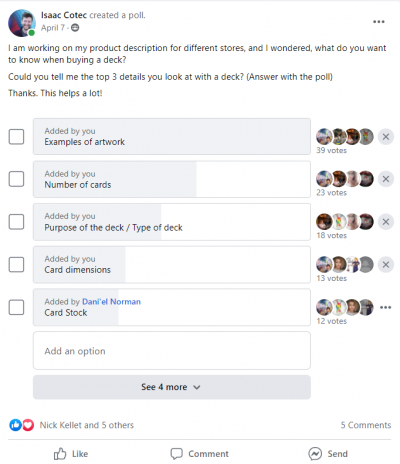
Research Findings:
- 79% of people polled have more than 10 decks. 68% of people polled with more than 6 decks said they would buy more if they had more space at home.
- Users would bring a deck when traveling, but they don’t have space or want to risk damaging their deck.
- 72% of tarot users have tried at least one tarot app. Many of those users ended up deleting the app because they didn’t like the design and got tired of only being able to access a single deck.
- Deck creators are looking for new ways to sell their decks and find alternative income streams that don’t rely on Amazon or Etsy for sales.
Key Takeaways:
- Most deck users would have more decks if they didn’t take up space on their bookshelves.
- Deck creators spend a lot of time creating a physical deck and are hesitant to release it digitally, fearing copyright fraud or losing possible sales.
- Deck users are interested in a digital version, but they can’t find their favorite decks via an app or are unhappy with the current options.
- The main reason users deleted a tarot/deck app is that they found it unengaging.
Define
In order to understand what users needed, I created personas. It also helped me explain the logic behind design decisions to the stakeholders.
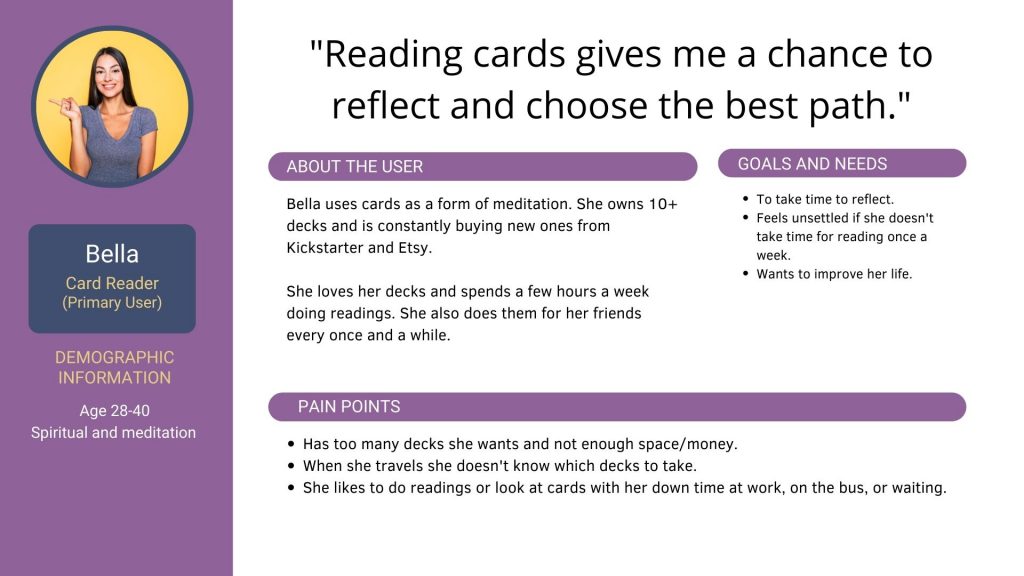
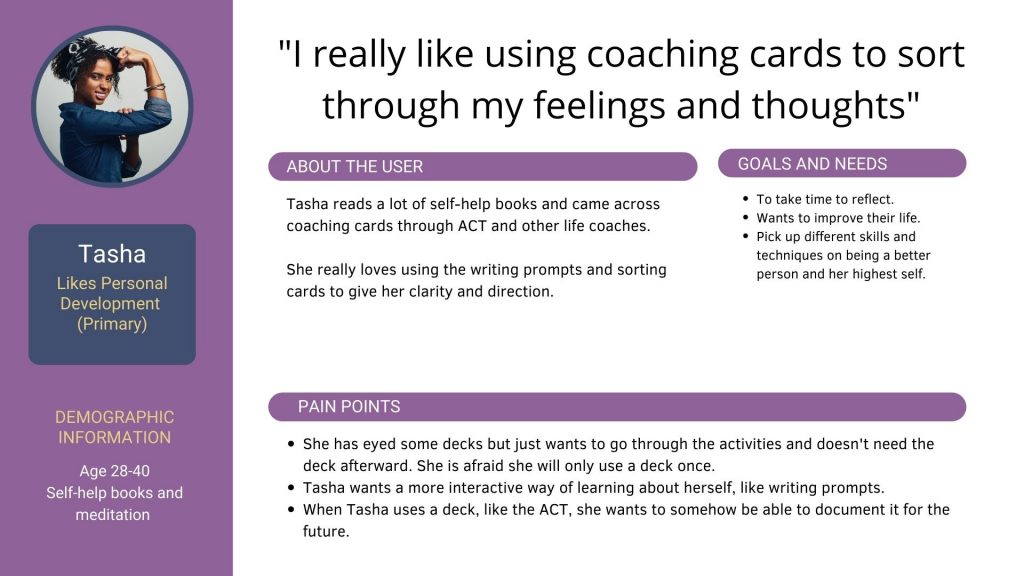

After compiling all the data from user interviews and secondary research, it was clear that we had three types of users. We had the creators selling their decks and then two different types of deck users: those using decks for meditation and reflection, and those using decks as mental exercises, such as coaching and psychology.
At this point we understood the user, but I needed to define the user’s problems and how the Deckible app could help them achieve their goals.
I created user journeys for each of the personas.
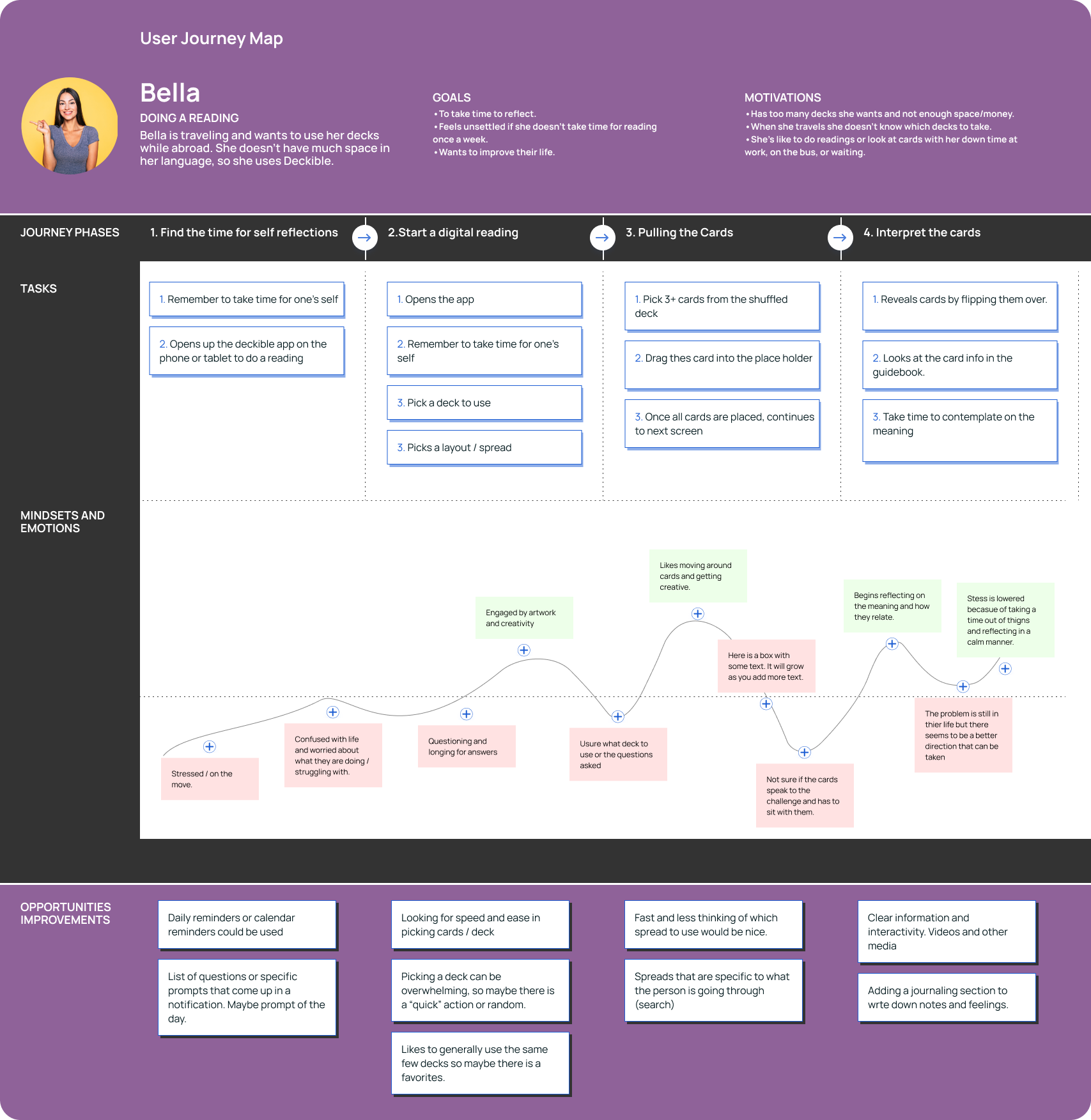
I expanded the Journey Map into Task Flows and a User Flow. I then went through the previous designer’s UI design and found clear pain points that block the users from completing the tasks they wanted to use the app for.
This gave us a road map for developing the design. I knew which pages were missing. Since time was of the essence, I started working on the highest priority tasks based on their impact on the user’s experience.
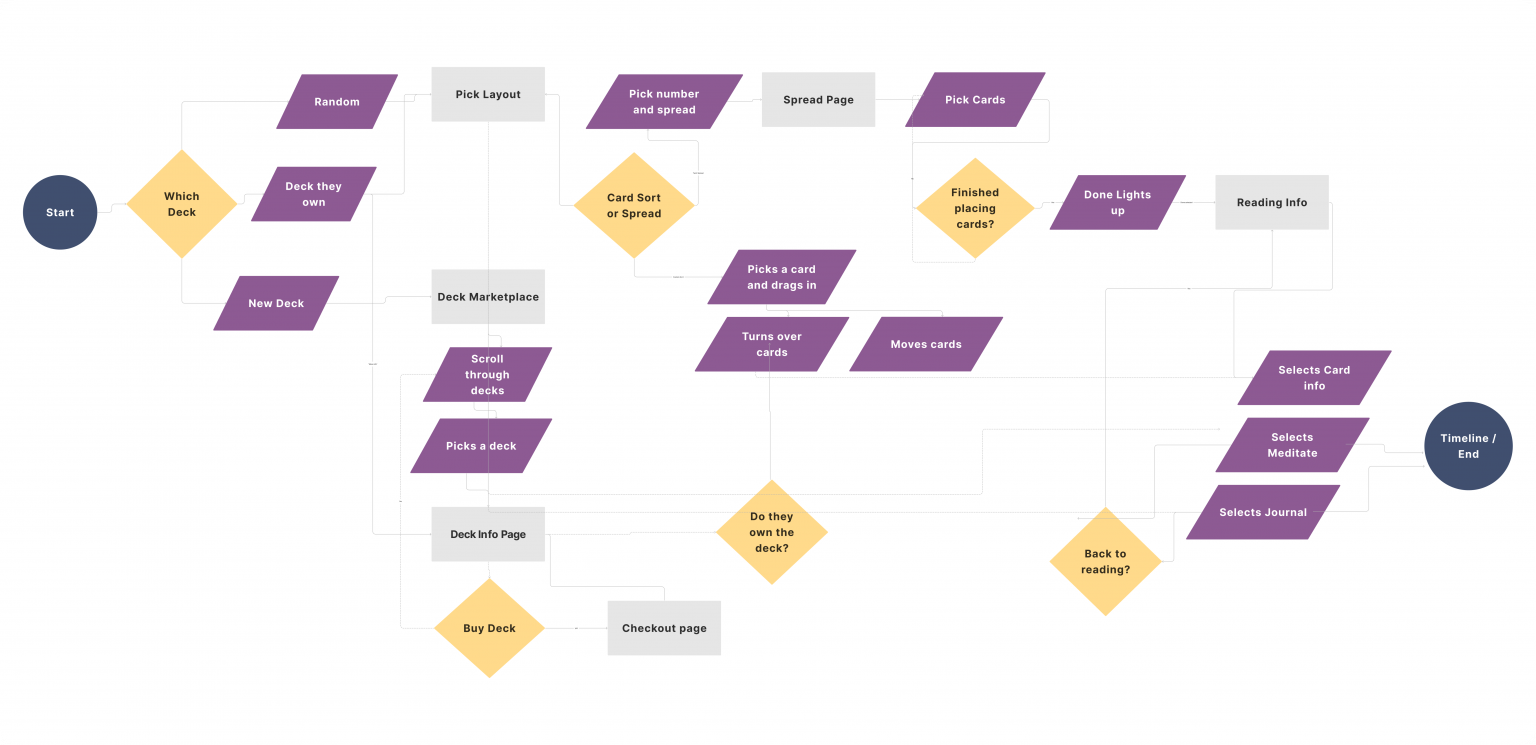
Design: Turning Broad Concepts into UX Solutions
I worked with the founder and developer to generate a broad range of ideas, and turned the sketches into design mocks and flows.
In several rounds of wireframing and prototyping, I observed user interaction and listened to user feedback to create design solutions that helped the user’s journey.
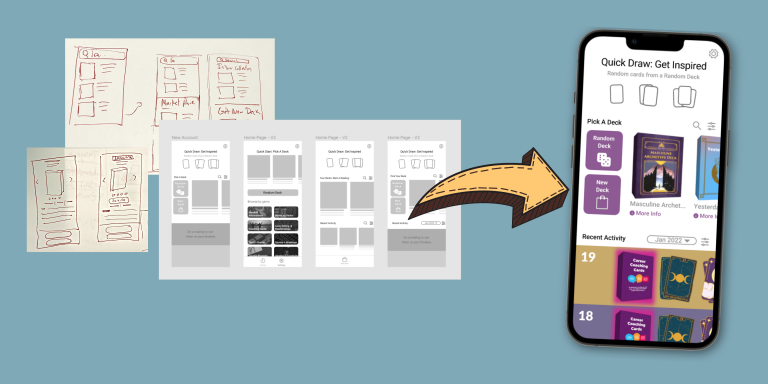
Turning wireframes into high fidelity prototypes
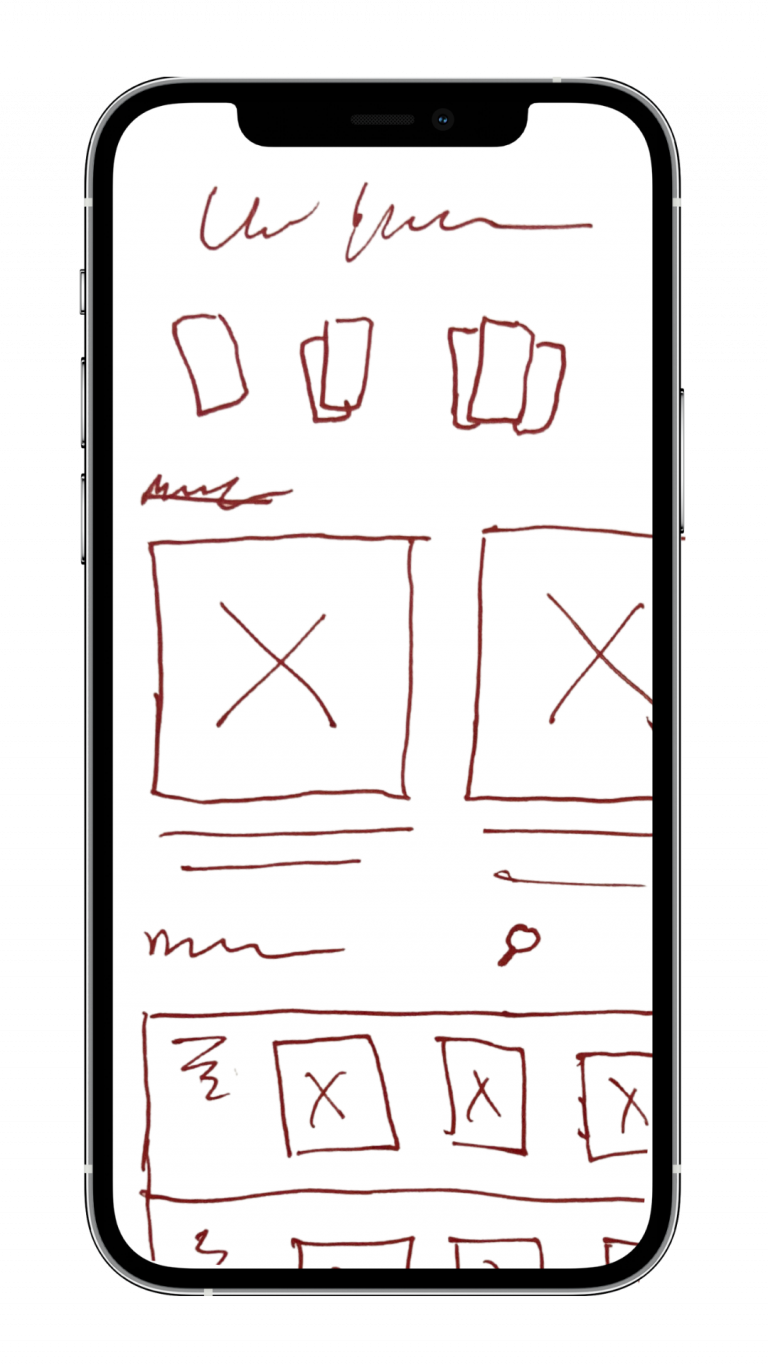
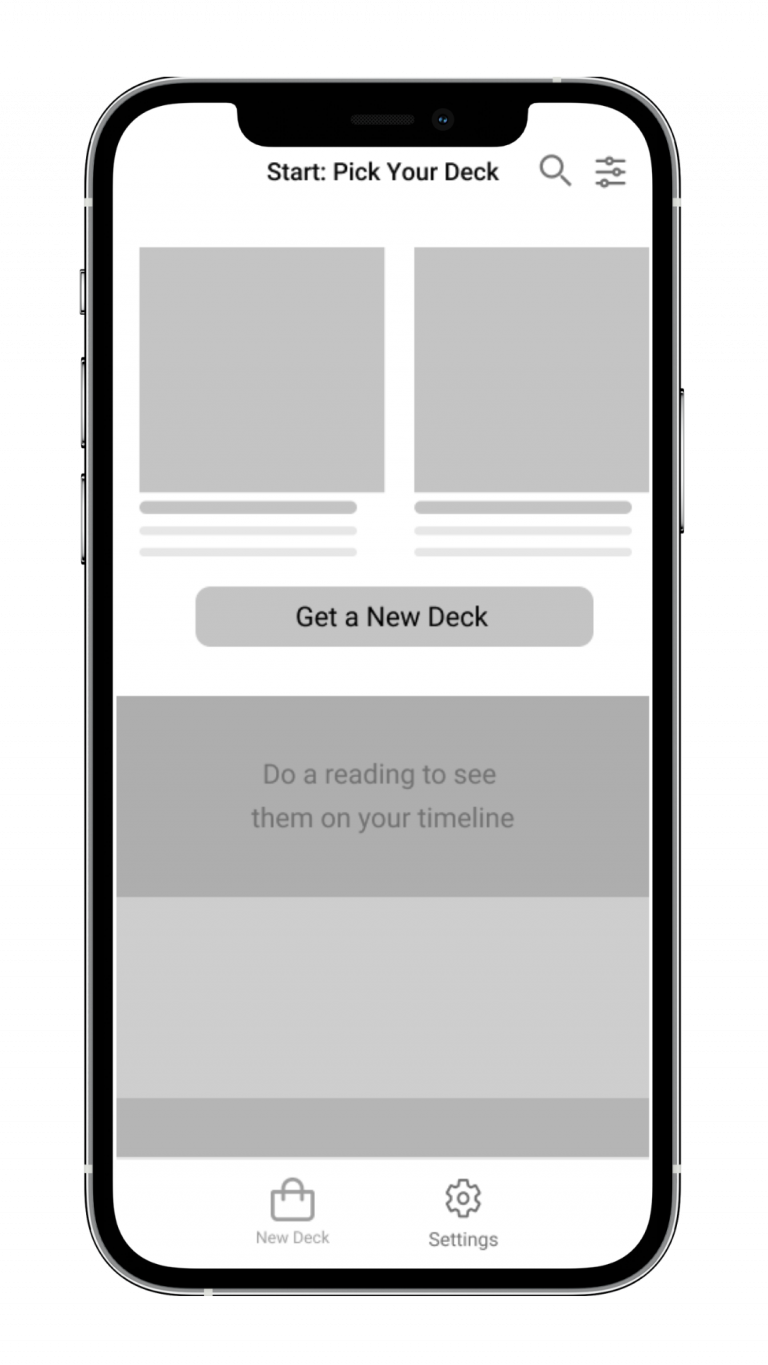
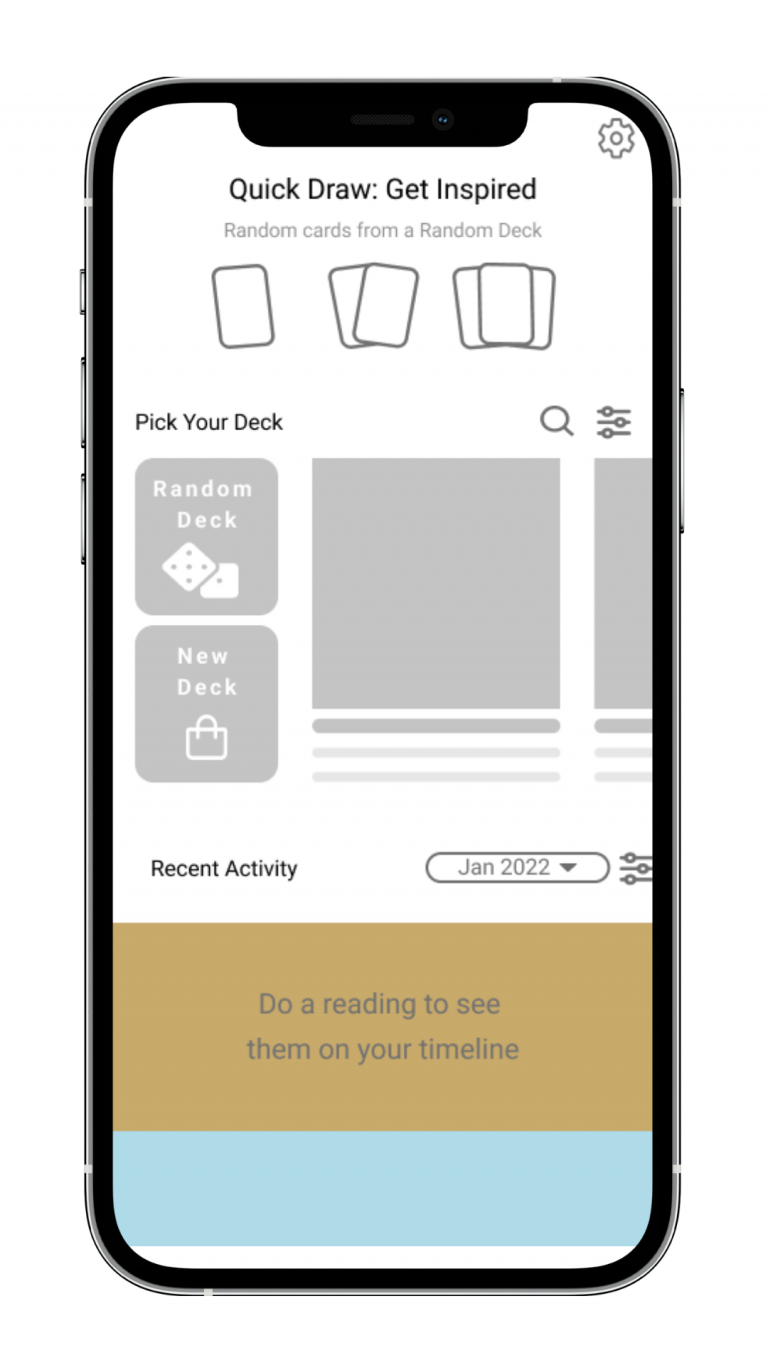
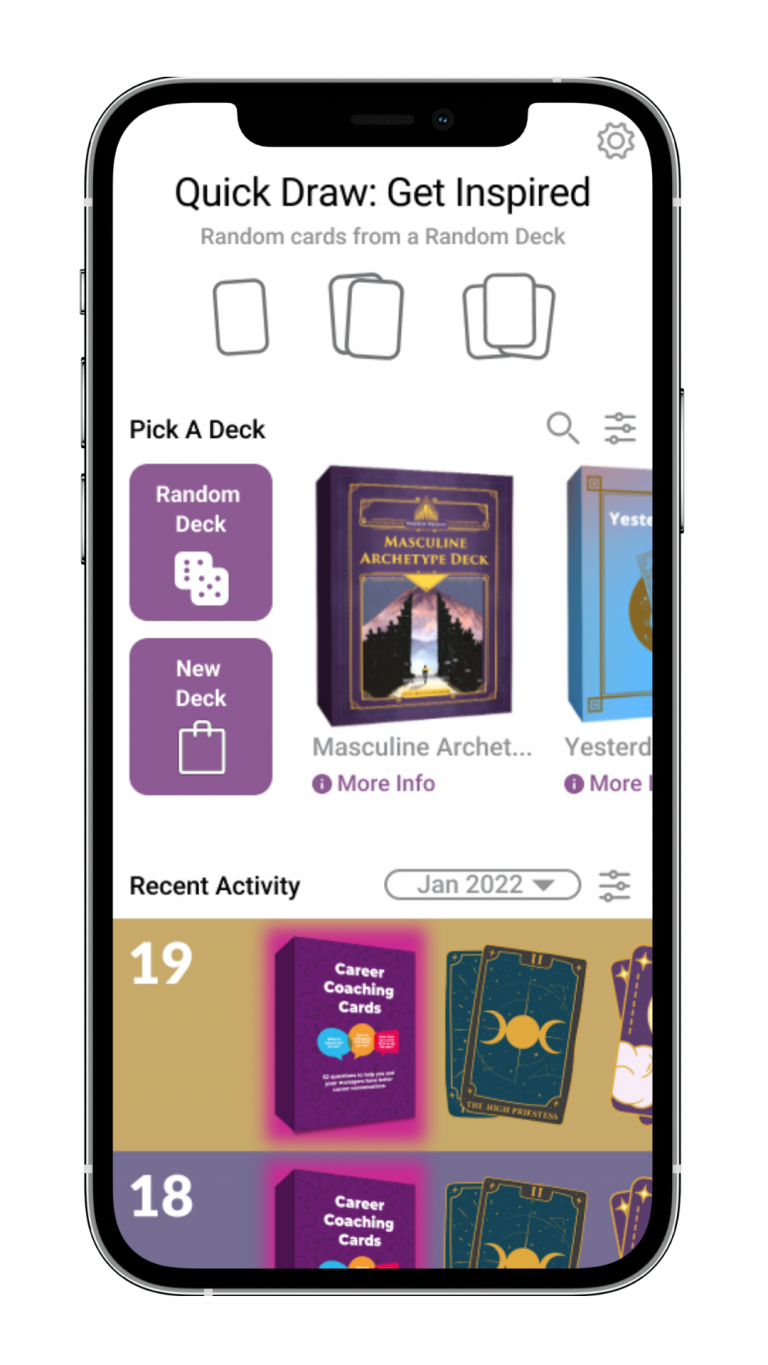
Building a Design System: Making it Consistent
As individual features gradually came to life, I built a design system to ensure the interface was cohesive throughout the product. I developed the brand color pallet, design components, and typeface. I decided on a minimal design approach to make the deck’s artwork center stage.

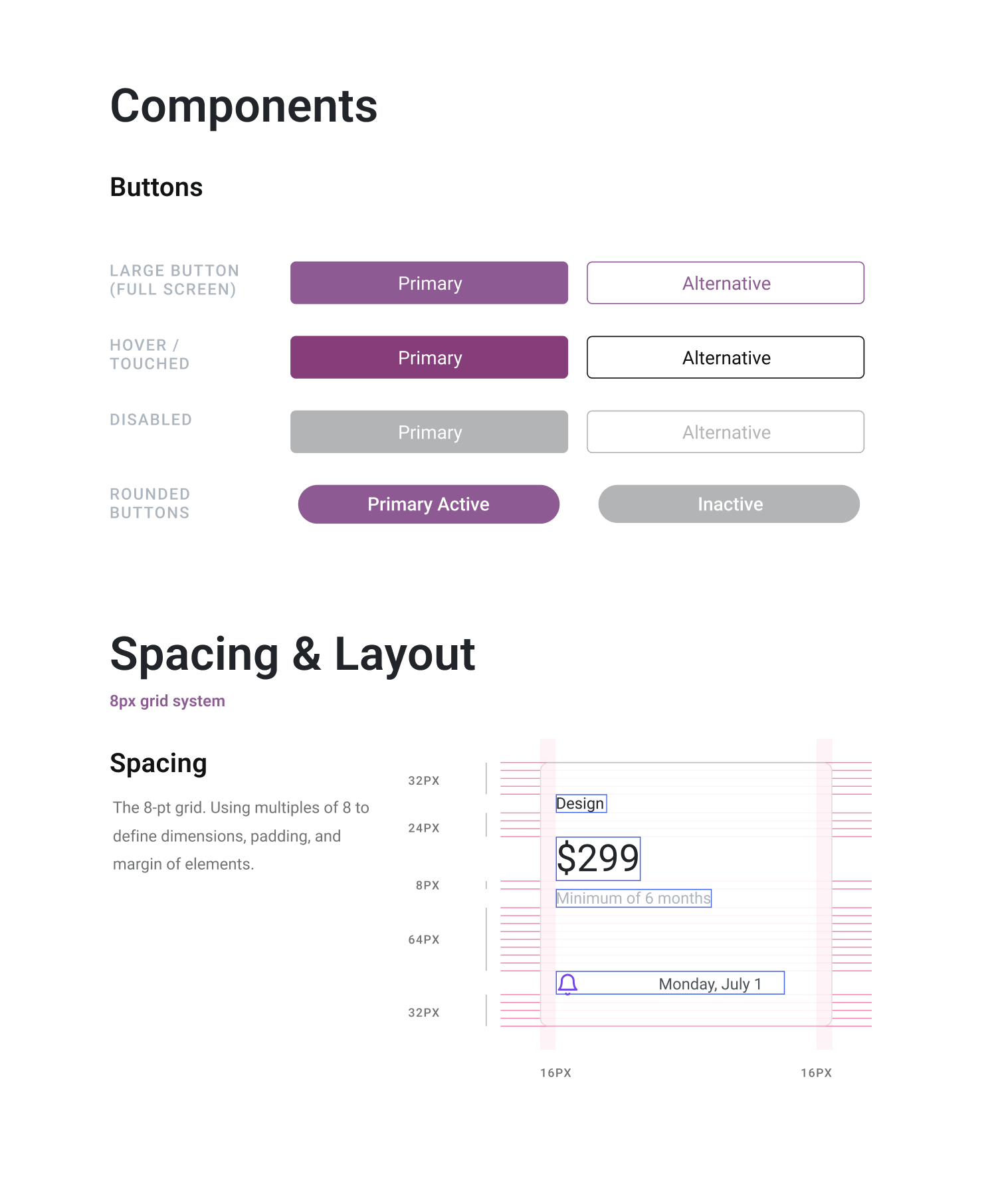
The design system also helped create consistency between the different pages of the app, and speed up the development time.
Deliverables
Multimedia Product Pages to Increase Session Length
I designed the deck info page to include videos, sample cards, audio recordings, and articles. This creates a more immersive experience for the user.

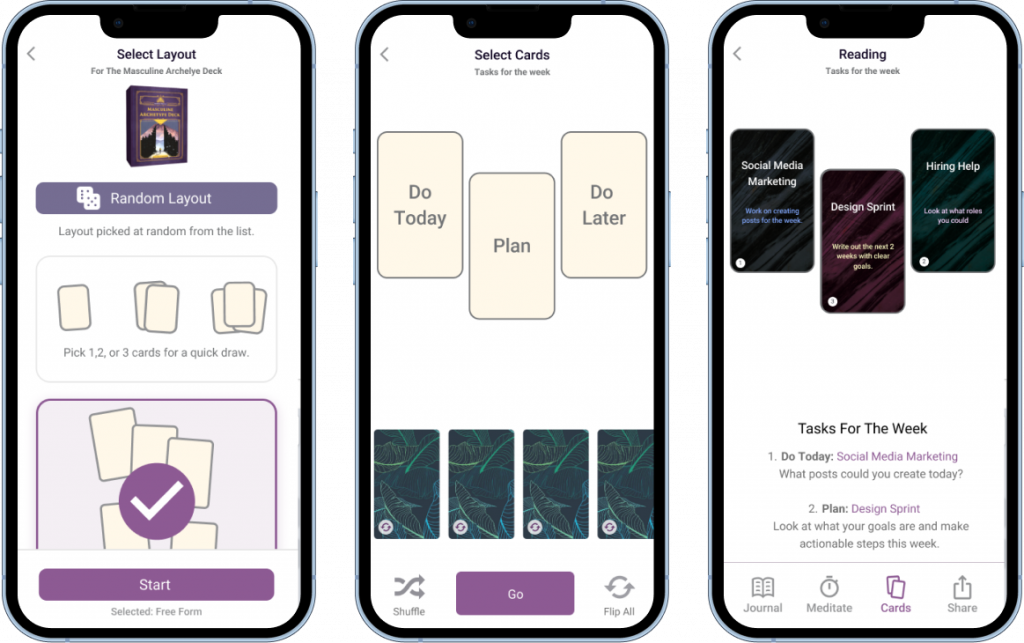
Layout Page to Increase Sessions Per User
Adding the layout page helped users start placing cards faster and improved user engagement. Through user research and iteration, I was able to make a user flow that gave enough choices to inspire the user, but not so many that they became overwhelmed with possibility.
A Marketplace That Encourages Discovery
With over 100 decks, we needed a robust solution for users to search for decks. This included:
- Sorting decks by genre
- Searching by name and author
- Sharing new decks that engage the specific tastes of the user
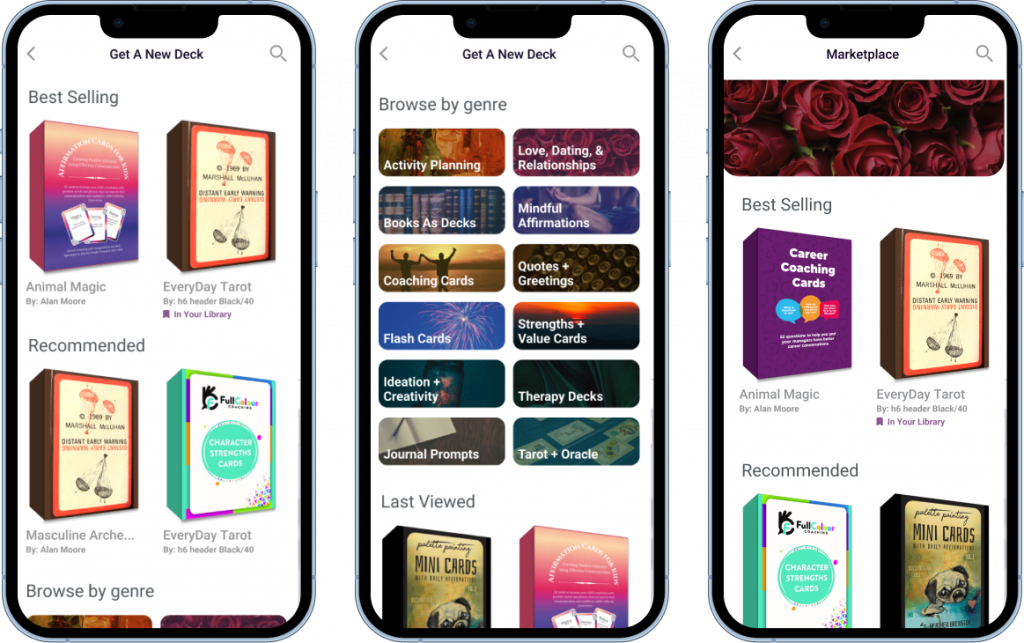
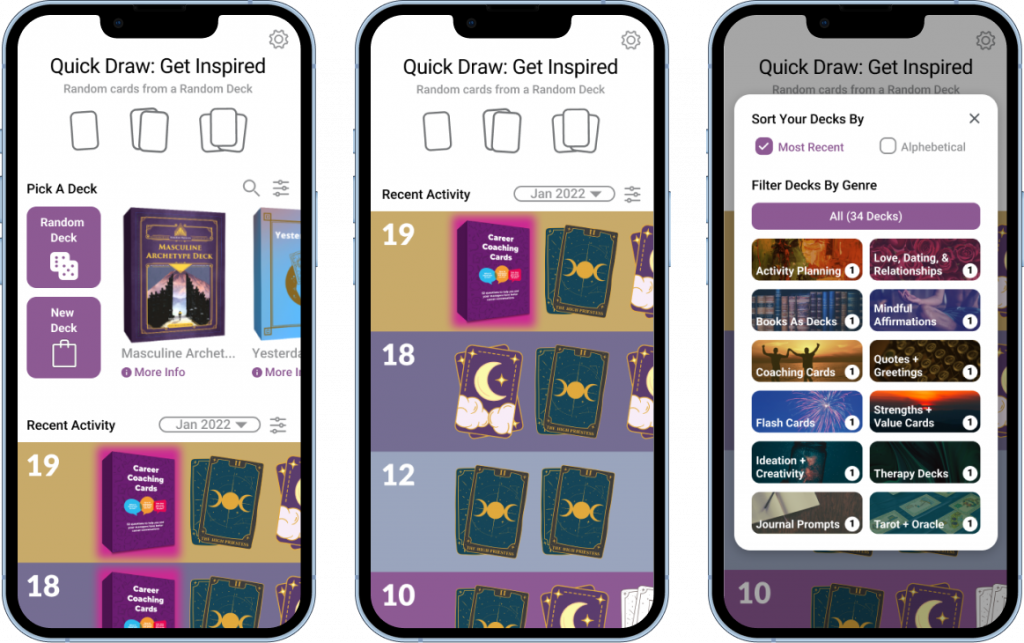
Redesign Homepage for Easy Access to Most Common Action
It’s important for users to be able to start using cards right away, as well as see past readings they have done. With that in mind, we created the Homepage with three sections.
- Quick Draw for a low barrier of entry
- Start by picking a deck
- Timeline with recent activity
Results
When I first joined Deckible, the ideas were planted but they hadn’t fully taken shape. By going back to the basics with user discovery, personas, and journey mapping I helped the Deckible team create a clear roadmap for development.
After implementing the new designs, all users interviewed found the app easier to navigate. 73% of people said they were more likely to use and share the app after the changes.
The changes in the app also inspired creators to join the platform and helped Deckible go from 50 decks to over 100 in 3 months.
I feel really proud of the work I did with Deckible, and look forward to seeing the app’s success when it launches in late summer 2022.
Let’s work together. Drop me a line!